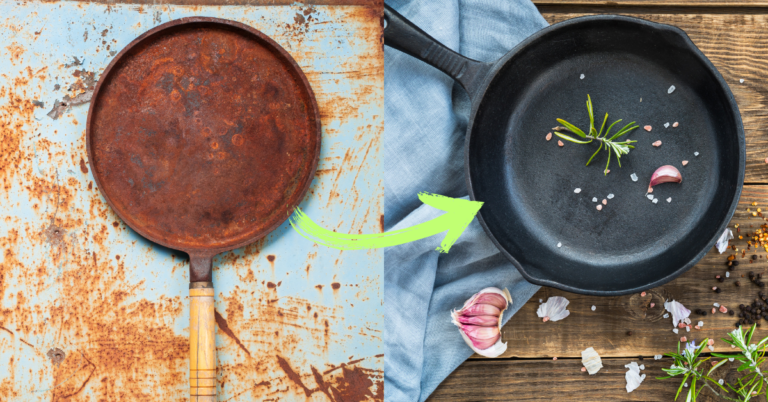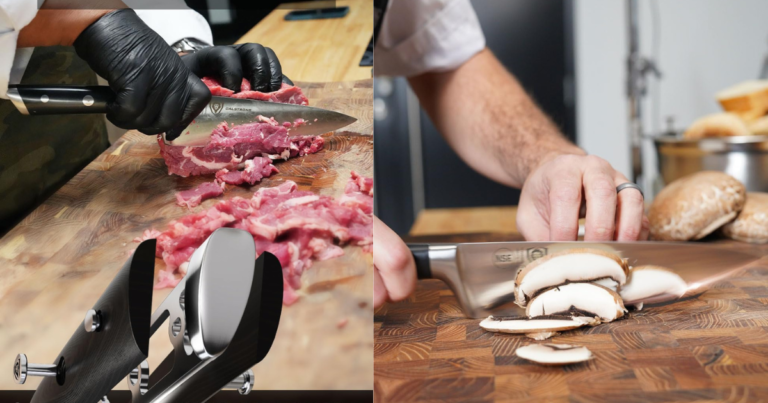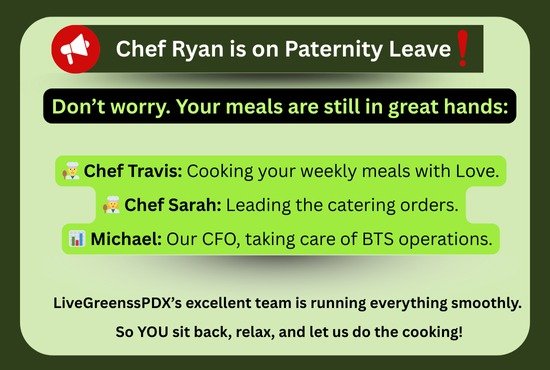How to Defrost Meat Fast (Thaw Frozen Meat Without Ruining It)

You Need to Be Careful when Thawing Frozen Meat.
You are in a hurry and want to defrost your frozen meat quickly, but be carefu,l as one wrong move can wreck its texture before it hits the pan. Mushy, rubbery, or dry meat often results from rushing to defrost meat the wrong way.
Here’s the problem: Ice crystals break down the muscle fibers when frozen meat thaws unevenly or too fast. That’s what makes it lose moisture and texture.
But the chefs at LivegreensPDX know the best methods to quickly thaw frozen meat without ruining it. And we’re going to share everything we know about this.
Whether you’ve got steaks, chicken, or ground beef on ice, you’ll learn how to defrost meat fast and keep it tender, juicy, and safe to cook.
The Best Methods to Quickly Thaw Frozen Meat (Safely & Without Ruining Texture)
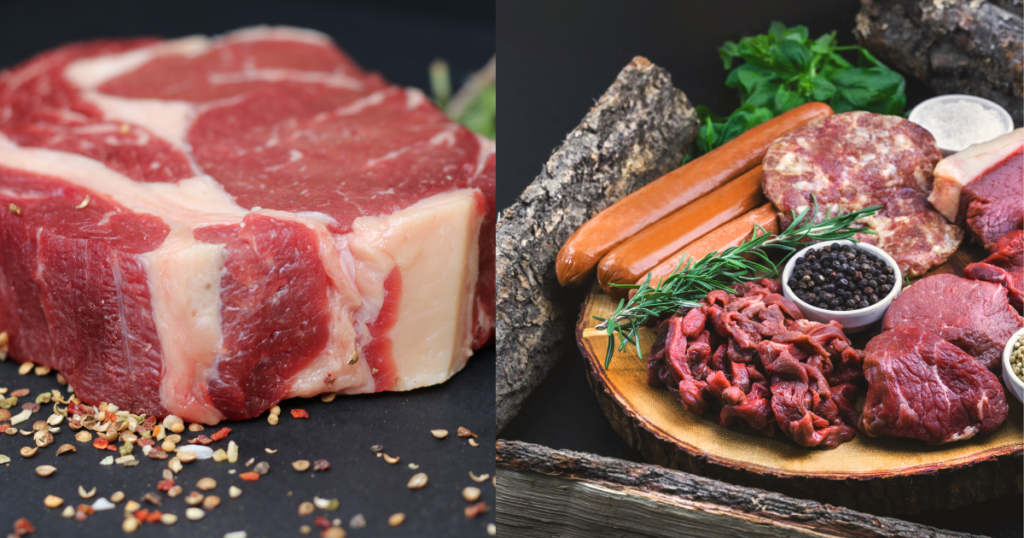
1. Cold Water Bath Method
This is the go-to method for chefs to defrost meat quickly without ruining its texture.
This is best for steaks, chicken breasts, and ground meat.
The timeframe depends on the size and thickness of the meat, but it usually takes 30 minutes to 1 hour.
Here’s how you can thaw frozen meat using cold water:
- Place the meat in a leak-proof, airtight plastic bag. You don’t want any water getting in and affecting the meat’s texture.
- Fill a large bowl (or your sink) with cold tap water.
- Submerge the bagged meat completely in the water.
- Change the water every 30 minutes to keep it cold. This prevents the outer layers from warming up too much, which can lead to bacterial growth.
Chefs love this method because it is quick and safe. It prevents the outside from getting too warm while the inside stays frozen. This method keeps the meat tender and juicy.
Pro Tip: Put a plate or a bowl on top of the meat bag to submerge it. This helps it thaw evenly and faster.
READ: Can You Put Hot Food in the Fridge? (+ Storage Tips)
2. Ice-Water Bath Method
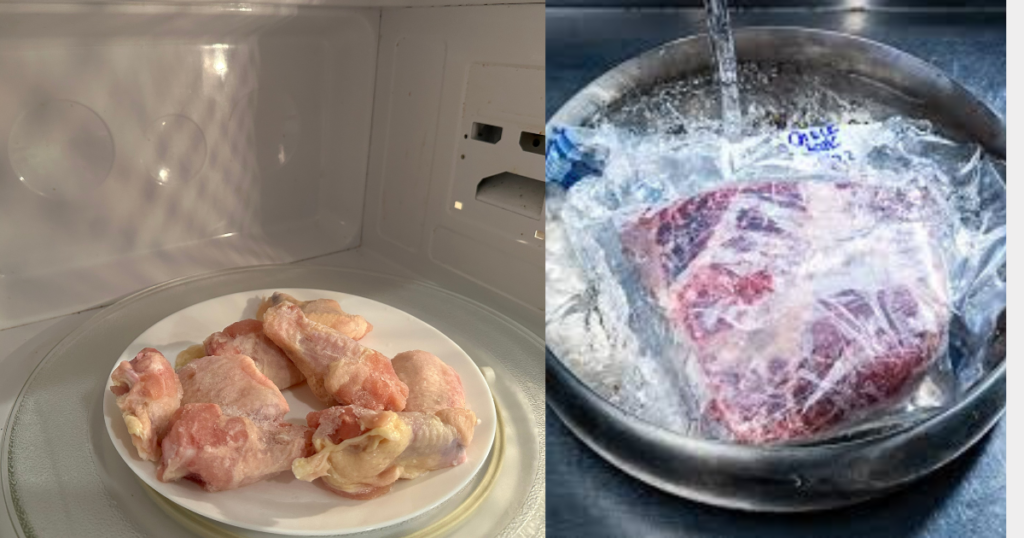
This method is your best bet if you’re dealing with delicate cuts. It’s fast, safe, and helps protect texture. This is best for fish fillets, shrimps, and poultry cuts (especially boneless skinless).
Here’s how we thaw frozen meat using an ice-water bath:
- Fill a large bowl with cold water and add a few handfuls of ice cubes.
- Place the frozen meat in a sealed, leak-proof bag.
- Submerge it fully in the ice water.
- Stir the water occasionally or move the bag slightly to keep the water circulating.
Smaller items like shrimp thaw in 15 minutes. But thicker cuts like fish fillets take about 30 minutes.
This method keeps the water temperature consistent and just above freezing. This also prevents the outer layers from softening too fast, which can make fish or shrimp mushy.
Important Note: If you’re thawing fish, pat it dry immediately after defrosting. This stops the flesh from absorbing too much moisture, keeping it firm for cooking.
3. Sous Vide Defrosting
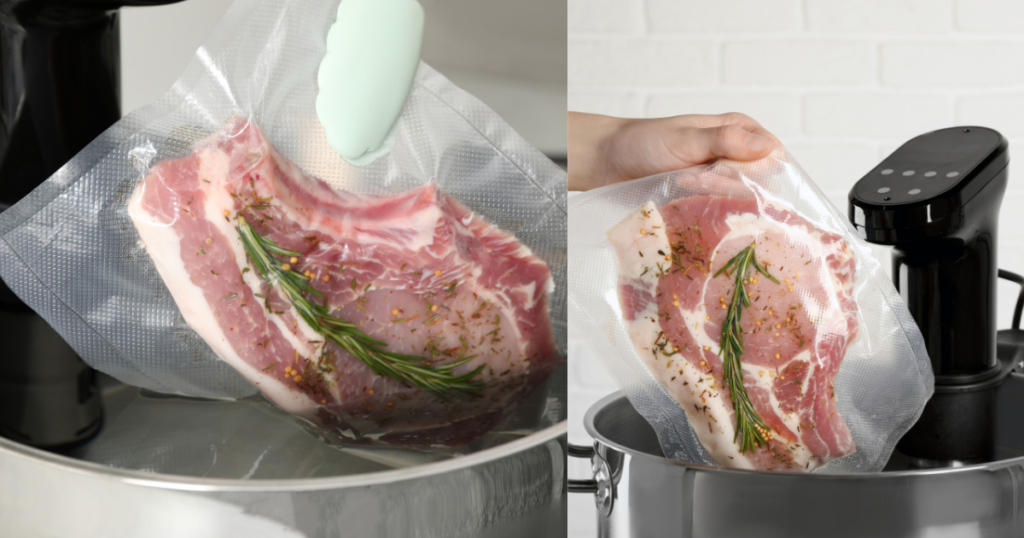
If you have a sous vide machine, it’s one of the safest and most reliable ways to thaw frozen meat without losing texture. It’s all about controlled temperature and even thawing. This method is best for premium steaks, pork loin and chicken thighs.
Here’s how to thaw frozen meat using a sous vide machine:
- Set your sous vide machine to a temperature between 38°F and 40°F (3°C-4°C).
- Place the meat in a vacuum-sealed bag. You’re good to go if it’s already vacuum-packed from the freezer.
- Submerge the bag completely in the water bath.
- Let it sit until thawed. Thinner cuts (like chicken thighs) thaw in about 15-20 minutes. Thicker cuts (like pork loin or ribeye steak) can take up to 45 minutes.
Sous vide keeps a constant, low temperature and there’s no risk of overheating the outer layer. It thaws the meat evenly, preserving its moisture and texture.
Once thawed, you can immediately raise the sous vide temp and cook the meat. No need to remove it from the bag.
Chef’s Pro Tip: Use sous vide thawing when dealing with expensive or high-quality cuts. It’s best to defrost meat when tenderness and flavor are a priority.
4. Microwave Quick-Thaw Method
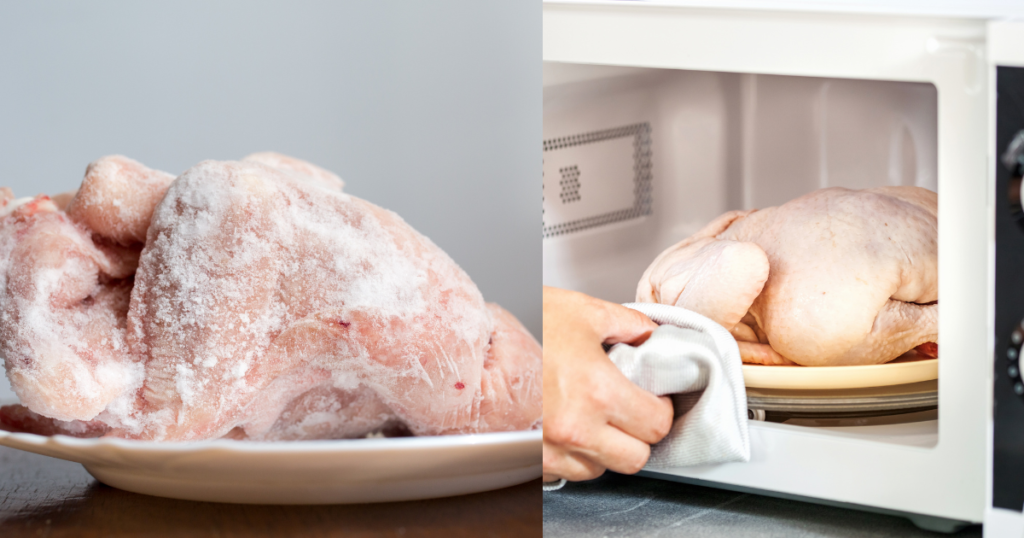
This method is a time-saver but should be your last option. If not done carefully, it can ruin the texture of your meat. Use only when you’re in a serious rush. This is best for small cuts, ground meat and last-minute meals.
Here’s how you can thaw frozen meat in the microwave without ruining it:
- Remove any packaging and place the meat on a microwave-safe plate.
- Use your microwave’s defrost setting (this runs at 30% or lower power).
- If your microwave doesn’t have a defrost button, manually set it to low power.
- Run the microwave in short bursts—one to two minutes at a time.
- Rotate or flip the meat frequently. This ensures it defrosts evenly and prevents cooking on the edges.
- Stop the process when the meat is pliable but cold in the centre.
This method is risky because microwaves can heat unevenly, and parts of the meat may start cooking while other parts are frozen. It can dry out the outer layers if not carefully managed.
Pro Tip: After microwaving, finish defrosting in a cold water bath for a few minutes. This helps restore even temperature and protects texture before cooking.
READ: 6 Ways to Fix Over Salted Soup (Without Starting Over)
Avoid These Common Mistakes When Thawing Frozen Meat Quickly

Even in a hurry, cutting corners can ruin your meat…or make it unsafe to eat. Here are the mistakes to avoid every time you defrost meat.
1. Don’t thaw frozen meat on the counter.
Leaving meat out at room temperature feels convenient, but it’s risky. The outer layer warms up quickly while the inside stays frozen. This creates the perfect environment for bacteria to grow. USDA guidelines warn against it for a reason. Always use cold water, the fridge, or a controlled method like sous vide.
2. Never use hot water to thaw meat.
Hot water speeds things up but raises the meat’s outer temperature too high. This can ruin the texture, making the outer parts mushy or even partially cooked. Worse, it promotes bacteria growth. Stick with cold or ice water for safe, even thawing.
3. Don’t use high microwave power.
Cranking up the microwave cooks the edges while the inside stays frozen. You’ll end up with rubbery or dry meat that’s unevenly thawed. Always use the defrost setting and rotate the meat often.
4. Make sure the bag is sealed tight in water.
If air or water enters the bag during a cold water bath, it can waterlog the meat. That means soggy texture and flavor loss. Double-check the seal before submerging.
READ: How Much Pulled Pork is Enough for 1 Person
How to Tell If Frozen Meat Is Fully Thawed (And Safe to Cook)
Before you start cooking, make sure the meat is completely thawed. Cooking meat that’s still frozen in the middle leads to uneven cooking. Parts can be overcooked while the center stays undercooked. Here’s how to check if your frozen meat is fully thawed and safe to cook.
1. Press Test
Press the thickest part of the meat with your fingers. If the center feels hard or icy, it’s still frozen. Fully thawed meat will feel soft and slightly springy, with no solid spots inside. This works for most cuts including steaks, chicken breasts, and fish.
2. Use a Thermometer
For bigger cuts of meat or when you’re unsure, a meat thermometer helps. Insert it into the thickest part of the meat. The internal temperature should be between 32°F and 40°F. If it’s colder, give it more time. If it’s warmer, cook it immediately.
3. For Ground Meat
Ground meat is easy to check by touch. It should break apart and crumble easily when fully thawed. It needs more time if it’s still stuck together in one solid piece. Always check before you cook. Thawing meat correctly helps keep it safe—and keeps your texture and flavor on point.
The Right Thawing Makes Your Meat-dishes Better
Thawing is a part of cooking. And when you get it right, you can taste the difference. Juicier chicken. Tender steaks. Fish that flakes just the way it should.
Don’t think about doing it fast. Think about doing it right. When you control the temperature and stay patient with the process, you protect all the flavor and texture you worked (and paid) for.
So, pick a method that respects the cut next time you need to thaw frozen meat. It’s a simple habit that makes every meal better. Share this blog with your cook friends. And visit our blog section for more kitchen hacks.





